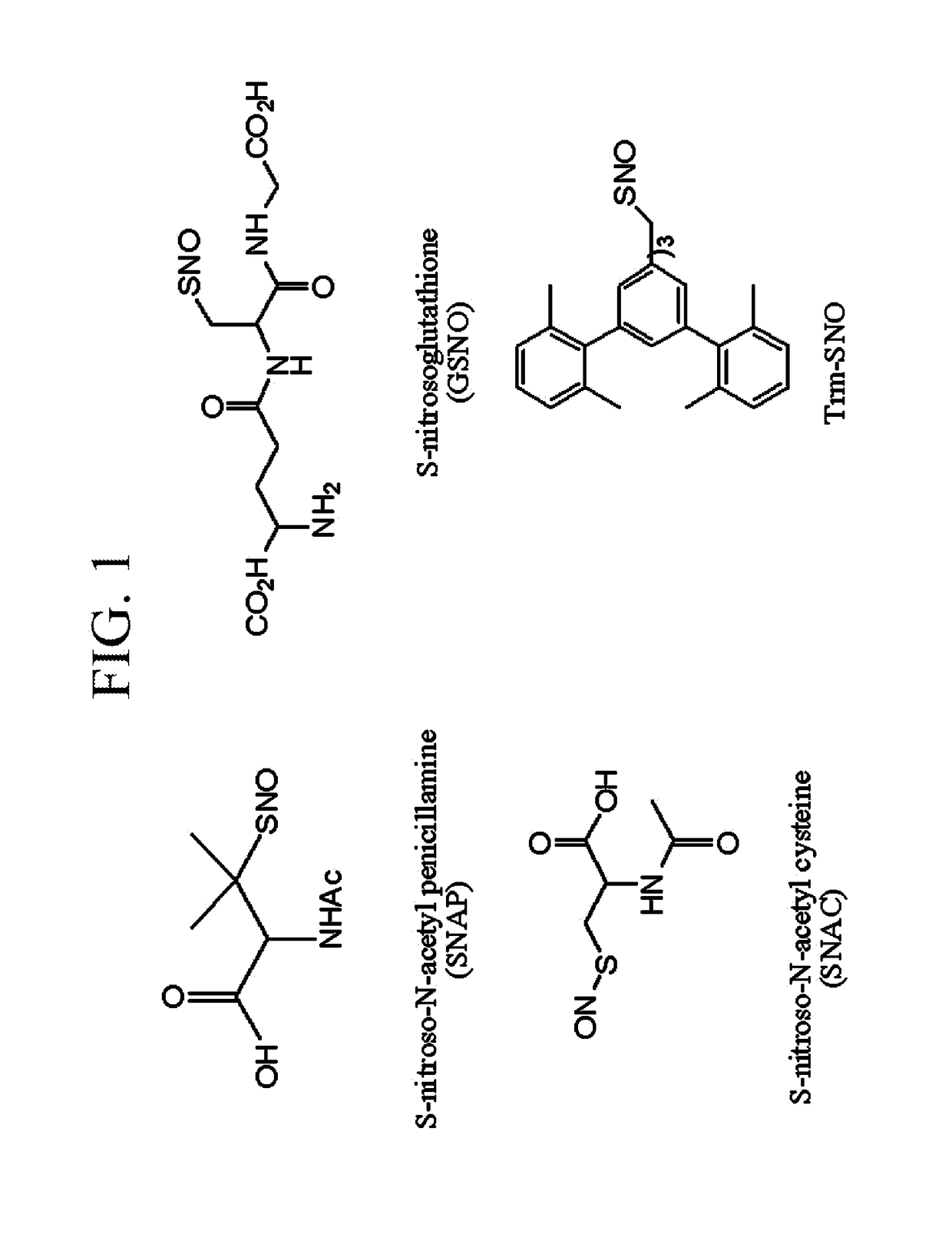Amperometric sensors and devices for measuring concentration of S-nitrosothiols based on photo-induced decomposition of S-nitrosothiols
a technology of s-nitrosothiol and amperometric sensors, which is applied in the direction of measurement devices, instruments, electrochemical variables of materials, etc., can solve the problems of inability to measure the concentration of rsno in a living body using the above-described method, and the sensor cannot differentiate the existing no from the no generated by rsno decomposition using the catalyst, etc., to achieve the effect of reliable measurement of the concentration of rsn
- Summary
- Abstract
- Description
- Claims
- Application Information
AI Technical Summary
Benefits of technology
Problems solved by technology
Method used
Image
Examples
example 1
Manufacture of Amperometric Sensor for Measuring Concentration of RSNO
[0068](1) Manufacture of Electrode for RSNO Sensor Using Optical Fiber
[0069]FIG. 4 shows a process of manufacturing an electrode introduced into an optical fiber as a component of an RSNO sensor, and a structure of an electrode manufactured according to one exemplary embodiment of the present invention.
[0070]An optical fiber 21 used as a body of the electrode was selected and made of a general resin such as polymethylmethacrylate (PMMA). An optical fiber was cut into pieces having lengths of 10 cm, and both end surfaces of the optical fiber were rubbed with sandpaper in a sequence from rough to fine (100, 400, 2000 and 4000 grits). Then, a lateral surface of the optical fiber was wound with a commercialized alloy conducting wire containing lead to install an operating circuit connection line 22. Thereafter, approximately a half of the end surface of the optical fiber was coated with a carbon paste (DUPONT, Lot #RK...
example 2
Manufacture of Device for Simultaneously Measuring Concentrations of RSNO and RSNO / NO
[0080](1) Manufacture of cell used in device for simultaneously measuring concentrations of RSNO and RSNO / NO
[0081]FIGS. 7 and 8 show shapes of cells used in a device for measuring a concentration of RSNO using an amperometric sensor of the present invention. A cell was made of an acrylic resin, and manufactured in a rectangular shape. As shown in FIG. 7, the cell had a longitudinal length of 6.7 cm and a vertical length of 3.8 cm, when viewed from the top, and the cell had a height of 2.6 cm, when seen from the side as shown in FIG. 8.
[0082]Passages were formed to mount a working electrode, a reference electrode and an auxiliary electrode from a top surface of the cell. That is, a passage 31 into which an auxiliary electrode having a diameter of 0.5 mm would be inserted was formed at a position spaced 2.3 cm apart from a left end of the cell, a passage 32 into which a reference electrode having a di...
PUM
| Property | Measurement | Unit |
|---|---|---|
| diameter | aaaaa | aaaaa |
| maximum wavelength range | aaaaa | aaaaa |
| maximum wavelength range | aaaaa | aaaaa |
Abstract
Description
Claims
Application Information
 Login to View More
Login to View More - R&D
- Intellectual Property
- Life Sciences
- Materials
- Tech Scout
- Unparalleled Data Quality
- Higher Quality Content
- 60% Fewer Hallucinations
Browse by: Latest US Patents, China's latest patents, Technical Efficacy Thesaurus, Application Domain, Technology Topic, Popular Technical Reports.
© 2025 PatSnap. All rights reserved.Legal|Privacy policy|Modern Slavery Act Transparency Statement|Sitemap|About US| Contact US: help@patsnap.com



